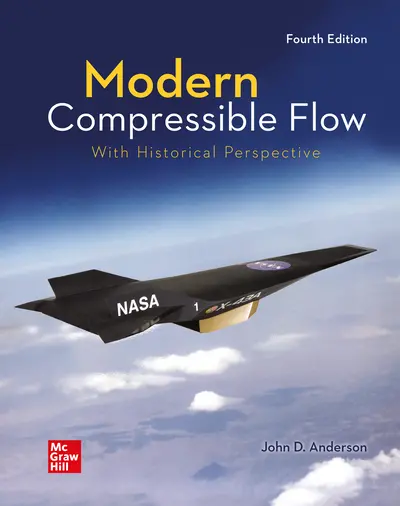My Account Details

ISBN10: 1260471446 | ISBN13: 9781260471441

* The estimated amount of time this product will be on the market is based on a number of factors, including faculty input to instructional design and the prior revision cycle and updates to academic research-which typically results in a revision cycle ranging from every two to four years for this product. Pricing subject to change at any time.
Instructor Information
Quick Actions (Only for Validated Instructor Accounts):
The response to the first three editions of Modern Compressible Flow: With Historical Perspective, from students, faculty, and practicing professionals has been overwhelmingly favorable. Therefore, this new edition preserves much of this successful content while adding important new components. It preserves the author’s informal writing style that talks to the reader, that gains the readers’ interest, and makes the study of compressible flow an enjoyable experience. Moreover, it blends the classical nature of the subject with modern aspects of computational fluid dynamics (CFD) and high temperature gas dynamics so important to modern applications of compressible flow. In short, this book is a unique teaching and learning experience.
1 Compressible Flow - Some History and Introductory Thoughts
2 Integral Forms of the Conservation Equations for Inviscid Flows
3 One-Dimensional Flow
4 Oblique Shock and Expansion Waves
5 Quasi-One-Dimensional Flow
6 Differential Conservation Equations for Inviscid Flows
7 Unsteady Wave Motion
8 General Conservation Equations Revisited: Velocity Potential Equation
9 Linearized Flow
10 Conical Flow
11 Numerical Techniques for Steady Supersonic Flow
12 The Time-Marching Technique: With Application to Supersonic Blunt Bodies and Nozzles
13 Three-Dimensional Flow
14 Transonic Flow
15 Hypersonic Flow
16 Properties of High-Temperature Gases
17 High-Temperature Flows: Basic Examples
Appendix A
Appendix B An Illustration and Exercise of Computational Fluid Dynamics
Appendix C Oblique Shock Properties: y = 1.4
Need support? We're here to help - Get real-world support and resources every step of the way.